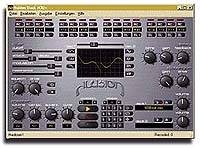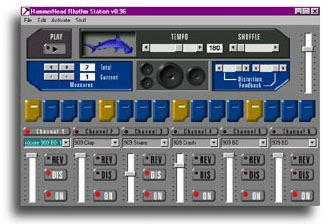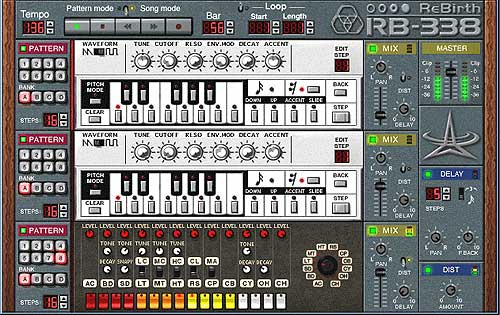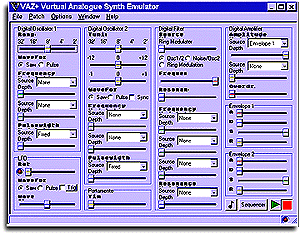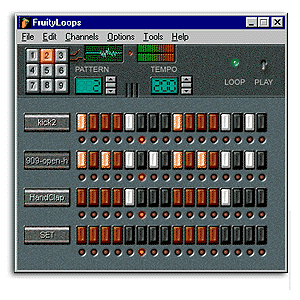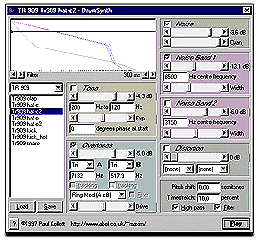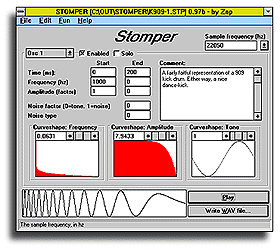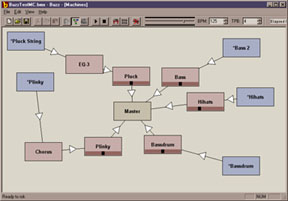Applied Acoustics Systems Lounge Lizard EP-1
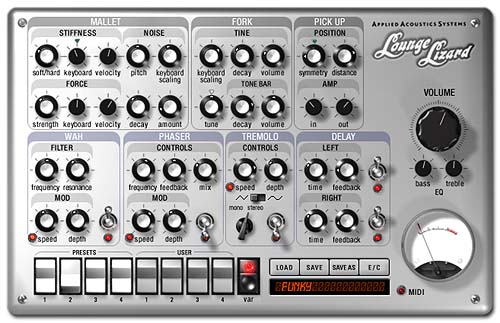
Category: Products / music software / software instruments
Added: 02-Nov-02 | Author: admin
New price: $179 | S/H price: Not listed
Company Link: Applied Acoustics Systems
Applied Acoustics Systems Lounge Lizard EP-1
Seems quite expensive, but is supposed to be very good with some 'named' users etc... (see AAS site) - Here' some intro blurb from their site pages...Applied Acoustics Systems is pleased to announce the release of the Lounge Lizard EP-1 for Mac OS and Windows PC, an unprecedented recreation of the classic electric piano sound, based on AAS's own physical modeling technology. All mechanisms used in the Lounge Lizard's hardware equivalents are precisely replicated including the hammer, tone bar, tine, and pick up. The sound is calculated in real time in accordance with the controls the program receives.
The resulting sound is unmatched in it's realism and warmth.
The Lounge Lizard EP-1 comes with presets modeled after the classic electric piano sounds, but users can also modify the existing sounds to create their own signature tones, saving them as user presets for instant recall. All parameters of the Lounge Lizard my also be automated via MIDI, allowing users to morph between presets, creating ever changing tones.
The Lounge Lizard functions as a standalone application, but also complies with many of the most widely used driver and plug-in standards, making it an excellent addition to any studio, or live rig.
The Lounge Lizard Modules: In Detail
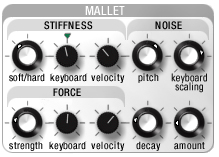 | Mallet - The mallet module has parameter controls for the material properties of the mallet head (stiffness), the striking force , and the audible noise the impact creates. The stiffness parameters allow you to change the mallets material from felt tip to solid steel with the twist of a single knob, as well as how the stiffness changes in response to the information received from the keyboard. The force parameters regulate how hard the mallet hits the tone bar and how this changes in response to the keyboard. The noise parameters allow you to adjust the volume and 'colour' of the sound of the mallets impact, and how this is altered by the keyboard. Setting the 'keyboard scaling' all the way to the left gives the impact noise a long decay on the lower octaves and short decay in the upper range. Setting this parameter around 11 o'clock produces a, more or less, equal decay time across the entire range of the keyboard. |
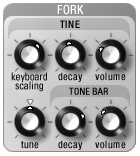 | Fork - The fork module is comprised of two elements, the tone bar, and the tine. The tine is the smaller of the two, and is directly struck by the mallet. It's controls allow you to adjust how it's pitch responds to the keyboard, it's volume, and it's decay, or how long it resonates after being struck by the mallet. This is one particular area where physical modeling provides a uniquely accurate synthesis of an actual electric piano. Unlike multi-sampled solutions which provide various recordings for different velocities across the keyboard, the algorithms used in our physical models produce a different timbre if the tine is at rest, or in motion when it is struck by the mallet, something that would take literally hundreds of samples to reproduce accurately! The tone bar is not directly struck by the mallet but instead, 'passively resonates' when the tine is struck. The module allows you to adjust the volume and decay of the tone bar, as well as how the decay is affected by the keyboard, just like the noise parameter of the mallet. |
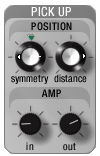 | Pick up - Far from being a simple amplifier, the pick-up module greatly effects the overall tone of colour of The Lounge Lizard. The symmetry parameter adjusts the pick-ups vertical position in relation to the tine. In a real electric piano, this was one of the key elements in 'tuning' the instrument, as well as one of the reasons why 2 epianos of the same model could sound slightly different from each other. When the green light is on, the pick-up is perfectly aligned with the tine, and the pure overtone is heard. Moving the pick-up above or below the line of symmetry decreases the amount of overtone, and alters the overall timbre. The distance parameter, as the name implies, adjusts how far the pick is from the fork. Turning this knob to the left, moves the pickup farther away from the fork and makes the sound quieter. Turning it to the right amplifies the sound, but also changes the shape of the sound and alters the overall tone making it...well..MEANER! Finally, the amp controls allow you to adjust the signal level 'pre' and 'post' pick-up. |
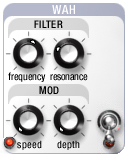 | Wah - The Lounge Lizards wah effect is a monophonic bandpass filter modeled after those found in popular guitar effects like the classic Cry Baby pedals. The on screen knobs allow you to adjust the center frequency and resonance of the filter. The center frequency can also be modulated by an LFO with a triangle wave form. The speed parameter adjusts the rate or frequency of the LFO, while the depth knob allows you to set how much the lfo will effect the frequency range, in other words, how wide a sweep the filter will have. The switch on the wah, and all the effects for the that matter, not only allows you to turn the effect on or off, it also stops your computer's processor from calculating the filter in the off position, preventing unnecessary CPU drain. |
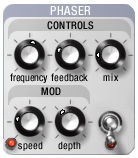 | Phaser - The phaser alters a signal by removing frequency bands from its spectrum. The effect is obtained by changing the phase of the frequency components of a signal using an all-pass filter and adding this new signal to the original one. In simple terms the phaser can almost be seen as an 'inverse wah' effect. The on screen controls give you control over the frequency range of the all pass filter, a mix knob for the dry and wet versions of the signal, and the amount signal that is fed back into the all-pass filter, or feedback. The phaser also incorporates the LFO modulator utilized in the wah effect, and an on/off switch which also shares the same characteristics. A slightly mellower sounding effect than the wah, the phaser is an excellent effect for adding subtle colour or warmth to your presets. |
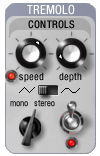 | Tremolo - The tremolo effect is easily the most often associated with the classic electric piano sound, as many of the most popular electric pianos had this effect built in. The Lounge Lizard's tremolo effect is accomplished by modulating the output signal's amplitude with an LFO similar to the one found in both the phaser and wah effects. The difference here is that you have two wave forms to choose from, the triangle as in the other two effects, and a specially formulated triangle / square mixed wave form We were fortunate during the Lounge Lizards development to have the input of several long time epiano owners, and were informed by one of these fine fellows that the Rhodes pianos in fact used this hybrid wave form to accomplish their tremolo effects, and not a simple triangle. So of course, being the details obsessed lot that we are, we had to implement it! The tremolo effect can be used in mono (for all you purists out there) or stereo, and features the same on/off switch as above. |
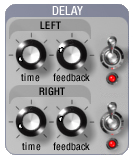 | Delays - The Lounge Lizard also features a high quality stereo delay modeled after the classic analog delay boxes. Independant controls are given for the left and right delays, for both feedback and delay time. Special care was taken in the designing of the delay to provide a very wide range of delay times. Turned to the left until around 3 o'clock, the Lounge Lizards delay is capable of creating various subtle chorusing effects , an excellent feature when you want to give the piano a little more space in the mix. Settings above this point provide everything from subtle echo to sheets of classic reggae dub wash. |
Product Manuals or Files
Product Resources
More choices in this product category from other manufacturers:
Category: Products / music software / software instruments
User Comments
THERE ARE NO COMMENTS POSTED FOR THIS PRODUCTBe first to add a comment - what's the product like in real life?...
'Applied Acoustics Systems Lounge Lizard EP-1'
Looking for the manual? - Check this page above under the heading: 'Product manual or files' - We might have it!
Note: To cut down on spammers, cookies must be enabled to post comments to this page.
Looking for the manual? - Check this page above under the heading: 'Product manual or files' - We might have it!
[back to top]
Total stars: 0 | Total votes:
2 other
products from
Applied Acoustics Systems
Thomann deals
